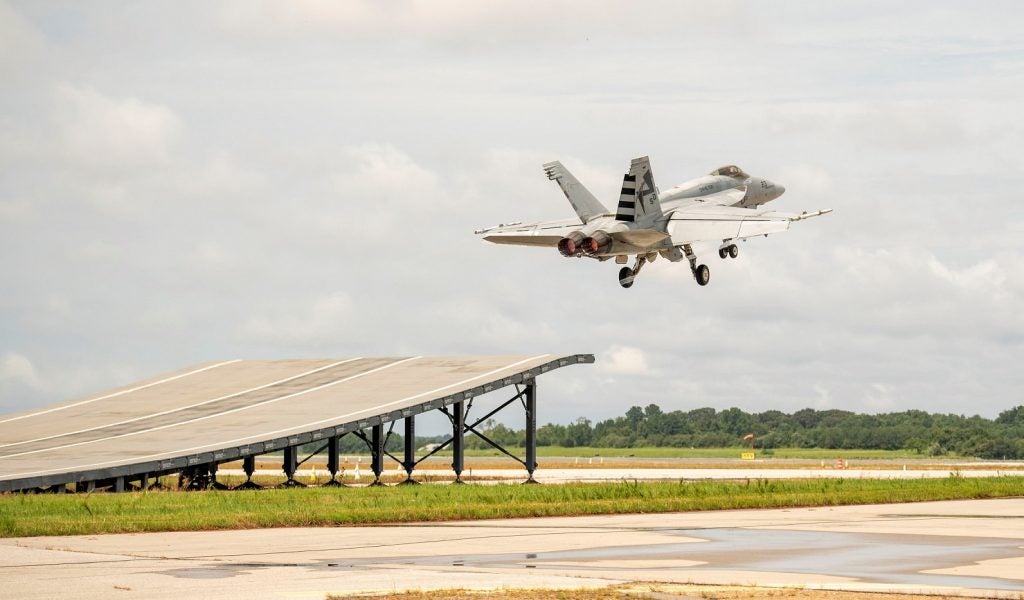F/A-18 Super Hornet Demonstrates STOBAR Capability in Bid for Indian Navy Carrier Fighter Contract
American aerospace giant Boeing, working alongside the U.S. Navy, has demonstrated that it’s F/A-18E/F Super Hornet can operate from a “ski jump” ramp, demonstrating the aircraft’s suitability for India’s aircraft carriers.
The demonstrations, held at Naval Air Station Patuxent River, Maryland, showed that the Super Hornet can perform with the Indian Navy’s Short Takeoff, Arrested Recovery (STOBAR) system. According to Ankur Kanaglekar, India Fighter Sales lead for Boeing, the demonstration by the F/A-18:
“…begins the validation process to operate effectively from Indian Navy aircraft carriers. The F/A-18 Block III Super Hornet will not only provide superior war fighting capability to the Indian Navy but also create opportunities for cooperation in naval aviation between the United States and India.”
The Indian Navy (IN) currently has a requirement for 57 twin-engine multirole aircraft to replace its fleet of MIG-29Ks, which have been a source of considerable trouble. Although the indigenously designed single-engine Tejas fighter has demonstrated its ability to operate from Indian carriers, the IN is so far adamant that it requires a twin-engine aircraft.
Though Boeing has pursued the IN contract for several years, now the prize appears more lucrative. Earlier this month Admiral Karambir Singh, Chief of the Naval Staff, said that ideally the Navy’s contract would combine with the Indian Air Force’s requirement for an additional 114 twin-engine strike fighters. By merging the two contracts the winning manufacturer will benefit hugely from the deal.
As a result Boeing is very much emphasising that should the Indian’s choose the F/A-18E/F Block III – which would be a unique export success for this particular aircraft model – they will benefit from both a proven aircraft in widespread use with the U.S. Navy, as well as the billions of dollars invested in the type by that service.
They would also be able to fully utilise their new access to American satellite data, as agreed in the BECA deal signed last month. This offers the prospect of hugely improved targeting capabilities in the event of a future conflict. With Sino-Indian rivalry still simmering on their mutual Himalayan borders, such a factor could weigh heavily in Boeing’s favor, especially if joint actions with the U.S. Navy are considered likely in the future.

